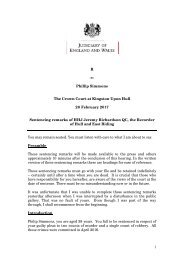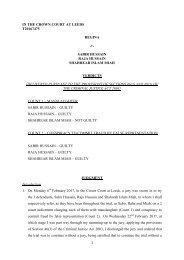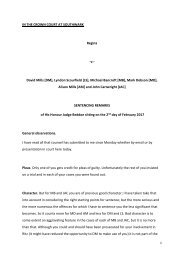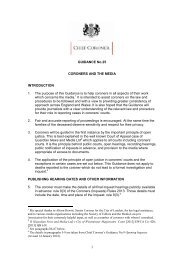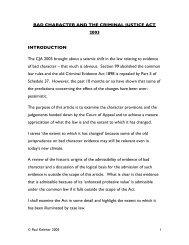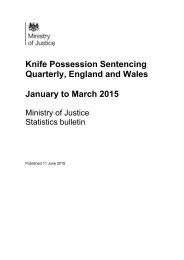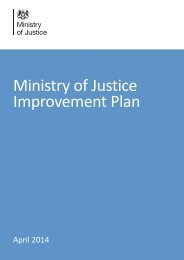HMP Doncaster
Doncaster-web-2015
Doncaster-web-2015
Create successful ePaper yourself
Turn your PDF publications into a flip-book with our unique Google optimized e-Paper software.
Summary<br />
Purposeful activity<br />
S20<br />
S21<br />
Time out of cell was poorly recorded and managed. Although there were enough activity spaces for<br />
the population, attendance was low, especially in education, and some good facilities were poorly<br />
used. There was some purposeful workshop provision, and the quality of education and vocational<br />
training was good, as were prisoner achievements. Library and PE provision were good but access<br />
was too limited. Outcomes for prisoners were not sufficiently good against this healthy<br />
prison test.<br />
At the last inspection in 2014 we found that outcomes for prisoners in <strong>Doncaster</strong> were reasonably<br />
good against this healthy prison test. We made 11 recommendations in the area of purposeful<br />
activity. At this follow-up inspection we found that four of the recommendations had been achieved,<br />
three had been partially achieved, and four had not been achieved.<br />
S22<br />
S23<br />
S24<br />
S25<br />
S26<br />
S27<br />
Prisoners' time out of cell was erratic and poorly managed. Many prisoners refused to<br />
engage in their scheduled activities and were not challenged sufficiently by staff or<br />
encouraged to attend them. Roll checks during the middle of the working day showed about<br />
half the population locked in their cells.<br />
There was insufficient strategic oversight of learning and skills and work activity. Managers<br />
did not have sufficiently accurate data to review and evaluate provision, and prioritise<br />
improvement actions. The self-assessment for education provision was realistic and linked<br />
well to the quality improvement process, but not to any improvement actions for wider<br />
prison training and work activities. There was good partnership working between the prison<br />
and other activity providers, and the range of provision was appropriate for the needs of the<br />
population.<br />
There were enough places for prisoners to undertake at least part-time activities, but these<br />
were underused and attendance was poor, especially in education. Prisoners received a good<br />
activities induction and the allocations process was fair and equitable. There were practical<br />
opportunities for prisoners to develop work skills. Prison work was purposeful, although<br />
much was mundane.<br />
Teaching, learning and assessment were mostly good in education and vocational training.<br />
The quality of tutor feedback in mathematics and English functional skills classes was variable.<br />
Education classrooms and vocational training areas were well equipped. The majority of<br />
teachers and vocational trainers supported prisoners well and assisted them to solve<br />
problems, manage their behaviour and overcome barriers to learning. Peer mentors were<br />
used well.<br />
Prisoners who attended education, vocational training or work behaved well, had positive<br />
attitudes and were courteous to each other and to staff. Prisoners reflected well on their<br />
learning and undertook increasingly complex tasks. Standards of work in education,<br />
vocational training and work were good, and prisoners made progress. Achievement rates in<br />
education and vocational training were high, although those in English functional skills at<br />
entry level were still too low.<br />
There was now a single library that had good stock, met the needs of most prisoners and<br />
had effective links with the education department. However, access to the library for<br />
prisoners not in education was poor.<br />
14 <strong>HMP</strong> <strong>Doncaster</strong>



